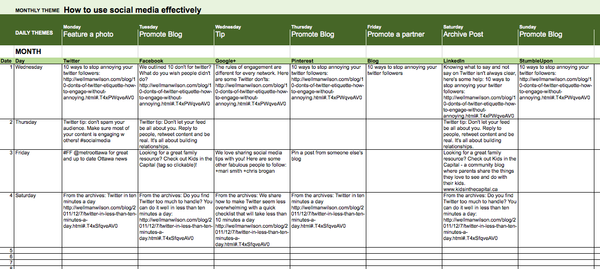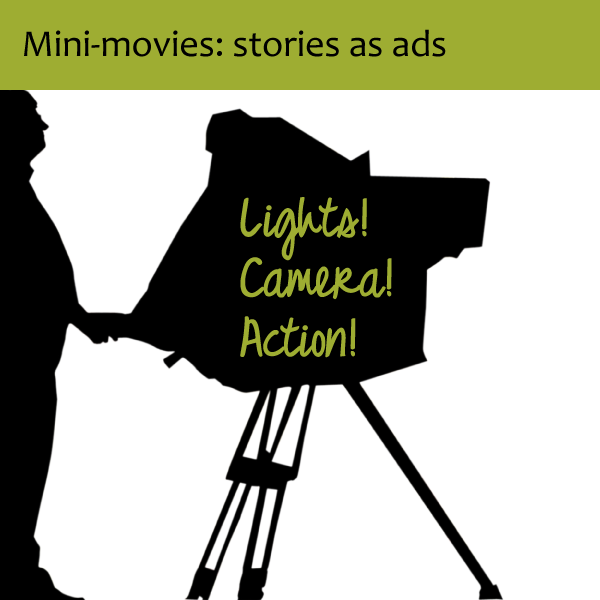Karen shared our #wwcbookclub book for April earlier this week and I’m writing about the same book again because there’s just that much to talk about with this book. Plus, we’re so excited for our friend Gini’s book launch! :)
 In 2000 I started the Public Relations program at Algonquin College. I was freshly home from Korea, where I’d gone to spend almost a year teaching English after graduating with a BA in Psychology I wasn’t sure what to do with.
In 2000 I started the Public Relations program at Algonquin College. I was freshly home from Korea, where I’d gone to spend almost a year teaching English after graduating with a BA in Psychology I wasn’t sure what to do with.
I clearly remember one of the very first things the program coordinator said to us on the day I started this program.
“Public relations is not about being a spin doctor, but that’s what people think it is.”
It’s stuck with me for almost 14 years now because it’s true, people do think that people who work in PR are just “spinning” a story, but that’s really not what well-done PR is about. Which is why I love reading Gini Dietrich’s blog and her books – she talks about and teaches PR the way it needs to be done so that people can understand it.
Her lastest book, Spin Sucks, just launched and I was thrilled to get my hands on it early. Now that I’ve read it (from cover to cover – rare for me!) here are my four reasons I think you should read this book, whether you’re a PR professional or not (though if you ARE a PR professional or student, you should just get it no matter what!) Ok, they aren’t reasons exactly, they are topics I think all business owners need to understand:
1) What’s your media?
Owned, paid, shared, earned, what is the difference and which ones do you need? Things have changed and you need to understand what kind of content you can have, what you currently do have, and what you want to have. And while you’re at understanding all of these, what are the right and wrong ways to try to get each kind.
2) Crisis communications
I’m a big believer in being prepared and the book helps you know what to do when something bad happens to you or your business, whether it be a big incident or a small one. No matter how much we’d like to protect ourselves from people saying things about us online we don’t want them to, we unfortunately don’t have the power. There are some really solid suggestions on how to do deal with that in the book. I’ll give you a hint on the most important part – don’t try to hide things.
3) Storytelling
People love a good story, and your story is the most interesting one of all when it comes to your business. The book has some really great examples that showcase the importance of storytelling and points you to some of your favourite novels for inspiration.
4) Google and Search Engine Optimization
Gini covers the topic in a way that gives you ideas on what to do or not do to help your rankings in search. While I would love to keep writing 300 word posts, I now know that I really should be keeping the posts between 500-800 words or so, and I’ve been putting in a lot of effort to make that happen (and totally nailed it on this post! :). Understanding how Google ranks your web site is so important and this book really taught me a lot and have brought a lot of things back top of mind for me.
So there you have it, a bit of a taste for what I think you can learn from this book. Check it out as soon as possible because if you take advantage before Saturday you get all kinds of awesome extra free stuff - and who doesn’t love free stuff? (answer: not me. *I* love free stuff)
BUY YOUR COPY OF SPIN SUCKS BY APRIL 5TH AND GET AMAZING EXTRAS!
- Enter the contest on the Arment Dietrich Facebook page.
- Email Gini a copy of your receipt to receive some free stuff! Ebooks, webinars, etc. (This one is worth buying the book for alone!)
MEET GINI AND HEAR HOW MUCH SPIN SUCKS LIVE!
One last note, for our Ottawa and Toronto readers: Gini’s coming to town next week (Karen and I will both be there)! She’ll be inToronto (#3tyyz) on Monday, the 7th and she’s coming to Ottawa (#3tyow) on Tuesday, the 8th.
April #WWCBookClub Twitter Chat
Mark your calendars, because April 24th from 9:00-10:00pm, we’re going to have a chat about #SpinSucks and everything you’ve learned! So, be sure to go buy the book now: Amazon.ca Paperback, Kindle (affiliate links).






